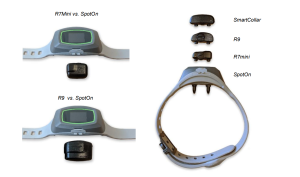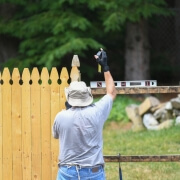Why Geo Dog Fencing Isn’t Better Than In-Ground Wired Options
/in Uncategorized/by Sam Chapman
Geo Dog Fencing, the new buzz word! When it comes to keeping our canine and feline friends safe within our property boundaries, dog owners have two popular options: geo (GPS-based) dog fencing and traditional in-ground wired dog fencing. While geo dog fencing seems like a high-tech, convenient solution, it still has several limitations that prevent it from being a better option compared to the reliable, tried-and-true in-ground wired systems. Below are some key reasons why geo dog fencing isn’t superior to in-ground wired options:
1. Accuracy and Reliability
One of the main drawbacks of geo dog fencing is its reliance on GPS signals to establish boundaries. While GPS technology is advanced, it isn’t foolproof. Geo fences can be less accurate due to signal interference caused by various factors, such as tall buildings, dense tree coverage, or adverse weather conditions. These signal disruptions can cause the virtual boundary to shift, potentially confusing your dog or failing to keep them within the intended area. In contrast, in-ground wired systems use a buried wire to establish a physical boundary that doesn’t shift or move, ensuring consistent and accurate containment.
2. Response Time of Geo Dog Fencing
Geo dog fencing often suffers from delayed response times due to its dependence on satellite signals. This will affect not just the response time as the pet enters the zone but also when the pet retreats. There can be a lag between the moment your pet crosses the virtual boundary and when the collar receives the signal to activate. If the collar picks up too slowly the pet will run through and conversely if your dog or cat enters and immediately retreats from the zone, the collar should also shut down; this is not the case with satellite based systems. This delay could allow your dog to wander too far beyond the safe zone before realising they’ve crossed the boundary, increasing the risk of escape. Our in-ground wired systems provide immediate feedback as the dog approaches the boundary, which effectively prevents dogs from crossing and reinforces their training.
3. Battery Life and Maintenance
GPS-based collars generally require more power than collars used with in-ground wired systems. This means geo fencing collars need frequent recharging or battery replacement. If a collar runs out of battery while your dog is outside, the containment system becomes ineffective, leaving your dog vulnerable. In-ground wired collars, on the other hand, typically have longer-lasting batteries and are more efficient since they only activate when the dog approaches the wire. This makes them more reliable for continuous use with less frequent maintenance.
4. Collar Size and Durability
 collars are not only the smallest and lightest worldwide among standard wired systems but also significantly lighter and less bulky than Geo collars. While our lightweight collar weighs less than 40g, including the battery, a typical Geo collar weighs around 227g. The average battery life on our mini collar = 6 months and on our standard collar = 2 years, whereas the run time on a Geo Collar = 36 hours (8 hours tracking). The extra weight of a Geo collar is due to the hardware required to connect with orbital satellites, making it inherently larger and heavier. In terms of warranty, Geo collars come with a one-year warranty that doesn’t cover accidental damage. In contrast, our DogWatch collars come with a lifetime warranty, even covering damage from dog chews
collars are not only the smallest and lightest worldwide among standard wired systems but also significantly lighter and less bulky than Geo collars. While our lightweight collar weighs less than 40g, including the battery, a typical Geo collar weighs around 227g. The average battery life on our mini collar = 6 months and on our standard collar = 2 years, whereas the run time on a Geo Collar = 36 hours (8 hours tracking). The extra weight of a Geo collar is due to the hardware required to connect with orbital satellites, making it inherently larger and heavier. In terms of warranty, Geo collars come with a one-year warranty that doesn’t cover accidental damage. In contrast, our DogWatch collars come with a lifetime warranty, even covering damage from dog chews
5. Boundary Customisation and Size
Our DogWatch wired systems offer unparalleled flexibility in defining boundaries. You can customise the layout to include specific areas like gardens, pools, or flower beds, keeping your dog away from dangerous or restricted zones within your property. You can also define the boundaries in irregular shapes that fit your properties exact layout. Geo fencing, while flexible to a point, often struggles with defining complex or irregular boundary shapes accurately. This limitation can be problematic for homeowners with unique property layouts.
6. Training and Learning
Dogs learn best with consistent and predictable cues. With geo dog fencing, the potential inaccuracies and delays can confuse a pet during training, making it harder for them to understand where they can and cannot go. In contrast, our wired fences provide clear, consistent feedback when a pet approaches the boundary, making training more straightforward. The defined physical boundaries of in-ground systems help pets learn and remember their limits more effectively, reducing the risk of boundary violations over time.
At the time of publishing this article the in ground dog fence option offers the best solution to pet safety, consistency and reliability. As technology progresses we may, in time, see other options built into all types of dog fencing and indeed the boundary wire maybe a thing of the past?
If you would to learn more about our system why not call us for a quick free consultation. We are able to estimate and draw your boundary without the need for a site visit using our land survey software. Call today on 01628 476475 or info@dogfence.co.uk. www.dogfence.co.uk.






